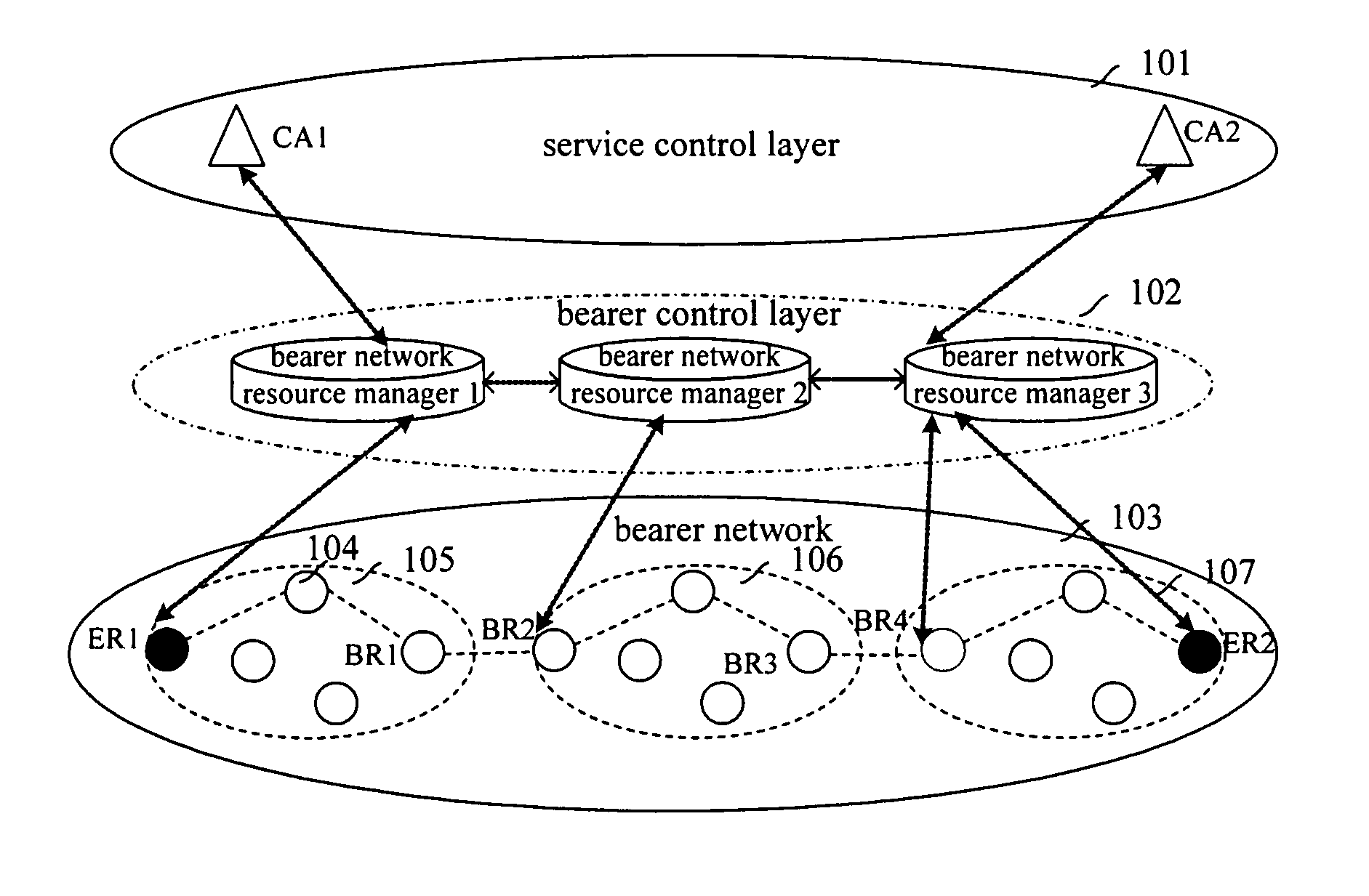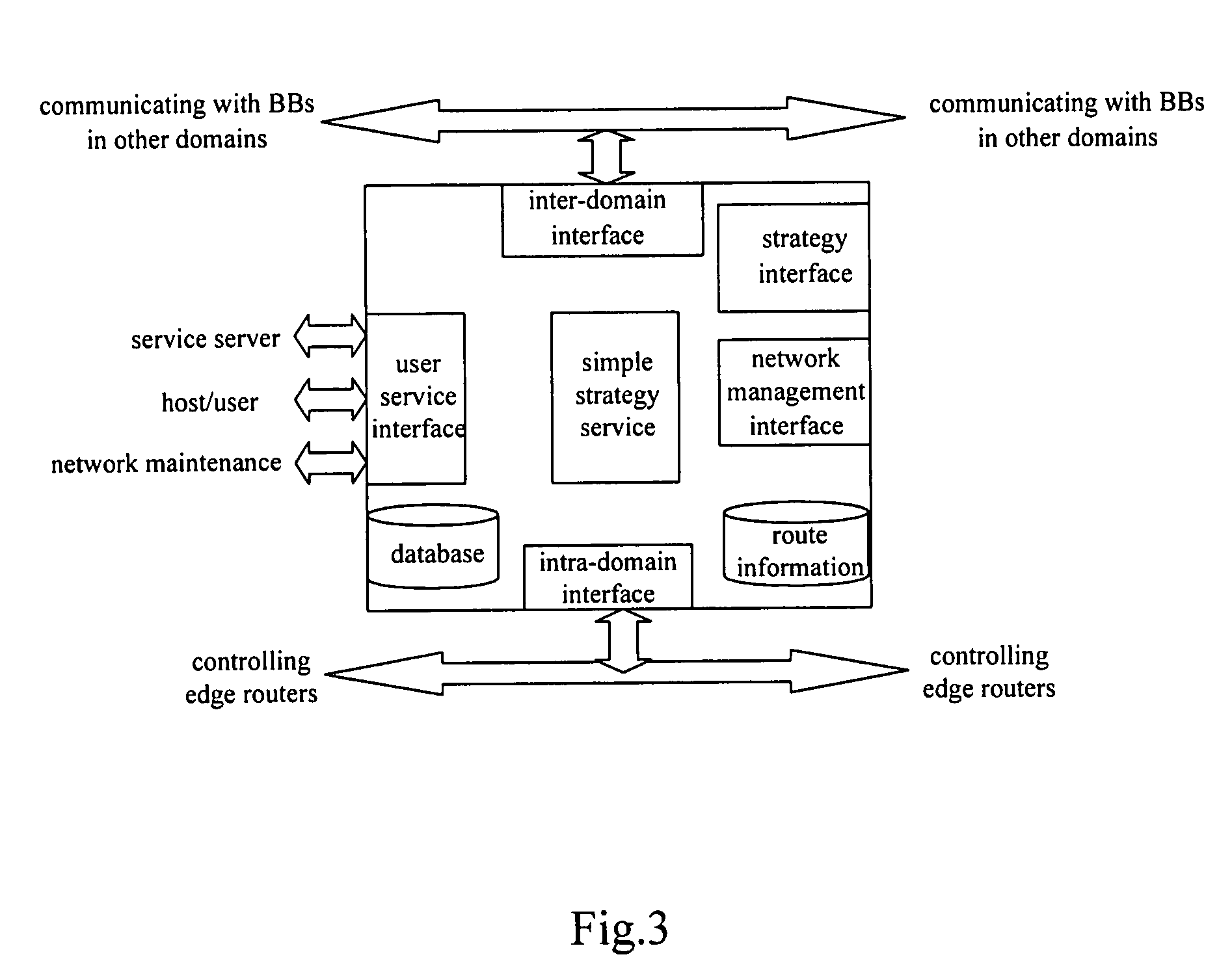Method for selecting real-time service data transmission path
a real-time service and path selection technology, applied in the field of routing selection technique, can solve the problems of inability to reliably transmit critical services to be guaranteed in the prior network, large impact on real-time services, and unpredictable actual effects, so as to improve path selection efficiency and success ratio, facilitate implementation, maintain and manage, and ensure the effect of path establishmen
- Summary
- Abstract
- Description
- Claims
- Application Information
AI Technical Summary
Benefits of technology
Problems solved by technology
Method used
Image
Examples
first embodiment
The First Embodiment
Forward Constraint and Backward Routing
[0099]Main idea of this routing method is as follows. Each bearer network resource manager, including a source bearer network resource manager, selects a next hop bearer network resource manager according to destination address in a request message and network topology structure after detecting itself is not a destination bearer network resource manager according to the received connection resource request message, namely after detecting the service stream in this request message should not be transmitted to external networks via any ER inside management domain of this bearer network resource manager, and then sends the connection resource request message to the next hop bearer network resource manager, and reserves inter-domain route resources between itself and the next hop bearer network resource manager. If detecting that itself is the destination bearer network resource manager according to the received connection resou...
second embodiment
The Second Embodiment
Hop-by-Hop Routing Manner
[0125]The present routing scheme provides a method of hop-by-hop routing in a bearer network, its key idea is: under the condition that each bearer network resource manager in a bearer control layer only knows the topology structure of its own management domain, or under the condition that each CN only knows its adjacent CNs, the bearer network resource manager or the CN will only select and determine a next hop bearer network resource manager or a next hop CN.
[0126]FIG. 8 is a flowchart of signaling route path establishment in a bearer control layer by utilizing the hop-by-hop routing method of the current embodiment.
[0127]In step 801, a source bearer network resource manager receives a connection resource request message from a CA, the request message including connection information, QoS parameters, service type etc. Here, the connection information includes session ID, IP address or domain name of a calling party, IP address or domai...
third embodiment
The Third Embodiment
Static Routing Manner
[0158]The core idea of the present embodiment is as follows. Route path information is pre-configured either in a bearer network resource manager statically or by utilizing a dedicated database. A bearer network resource manager acquires the configured route path information when being activated, and selects a proper route path from the pre-configured route path information after receiving a connection resource request or a connection resource response, so that establishment and selection of route path are completely separated. Here, the configured route path information can be placed in a route table with entry routers and exit routers as column items and row items respectively. The table can be a route table indicating relationship between ER and BR, or be one indicating relationship between BRs.
[0159]In the present embodiment, data transmission is implemented via a network based on the Diff-serv model shown in FIG. 1. The route in the bear...
PUM
 Login to View More
Login to View More Abstract
Description
Claims
Application Information
 Login to View More
Login to View More - R&D
- Intellectual Property
- Life Sciences
- Materials
- Tech Scout
- Unparalleled Data Quality
- Higher Quality Content
- 60% Fewer Hallucinations
Browse by: Latest US Patents, China's latest patents, Technical Efficacy Thesaurus, Application Domain, Technology Topic, Popular Technical Reports.
© 2025 PatSnap. All rights reserved.Legal|Privacy policy|Modern Slavery Act Transparency Statement|Sitemap|About US| Contact US: help@patsnap.com



